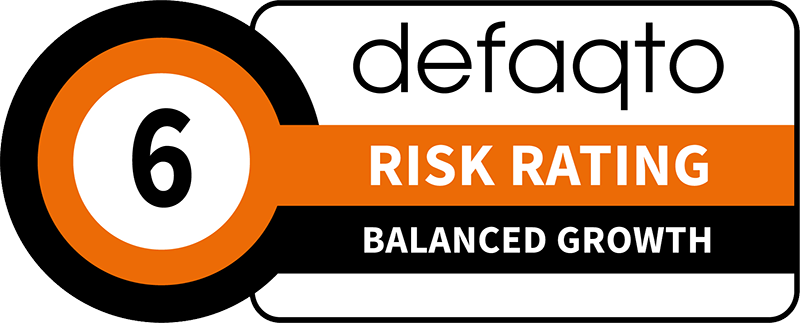Wise Multi-Asset Income
Investment Objective
The Fund aims (after deduction of charges) to provide:
- an annual income in excess of 3%: and
- Income and capital growth (after income distributions) at least in line with the Consumer Price Index ("CPI"), over Rolling Periods of 5 years.
Fund Attributes
- A flexible, diversified portfolio that can invest in all asset classes.
- Targets a consistent and attractive level of income.
- The portfolio invests both direct and through open and closed-ended funds.
- Adopts a value bias investment approach.
- Pays monthly distributions
Investor Profile
- Seek an attractive level of income and the prospect of some capital growth.
- Accept the risks associated with the volatile nature of an adventurous multi-asset investment.
- Plan to hold their investment for the long term, 5 years or more.
Key Details
| Target Benchmark | UK CPI |
|---|---|
| Comparator Benchmark (Sector) | IA 40-85% Investment Sector |
| Launch date | 3rd October 2005 |
| Fund value | 65.4 million (GBP) |
| Holdings | 29 |
| Historic yield | 5.4% |
| Div ex dates | First day of every month |
| Div pay dates | Last day of following month |
| Valuation time | 12pm |
- Past performance is not a guide to the future and outperforming target benchmarks is not guaranteed.
- The historic yield reflects distributions over the past 12 months as a percentage of the price of the B share class as at 29th February 2024. Investors may be subject to tax on their distributions.
Dividend Information
Income Information
| 2006 | 1.82 |
|---|---|
| 2007 | 4.3 |
| 2008 | 5.03 |
| 2009 | 4.6 |
| 2010 | 4.22 |
| 2011 | 4.95 |
| 2012 | 5.29 |
| 2013 | 5.1 |
| 2014 | 5.35 |
| 2015 | 5.34 |
| 2016 | 5.49 |
| 2017 | 6.06 |
| 2018 | 6.87 |
| 2019 | 6.62 |
| 2020 | 6.09 |
| 2021 | 3.77 |
| 2022 | 5.69 |
Fund Ratings





Fund Commentary - March 2024
Despite inflation in the US and Eurozone coming in stronger than expected and economic growth forecasts increasing over the month, commentary from global central banks reassured markets that the ‘Goldilocks’ outlook of decent GDP growth, falling inflation and the prospect of future interest rate cuts remained intact. The US Federal Reserve (Fed) meeting towards the end of the month had been preceded by stronger than expected inflation numbers offset by a sharp revision lower in the number of jobs believed to have been created in the economy in December and January.
With markets over the last three months having already halved the number of interest rate cuts expected this year, there was relief when the Fed indicated they still expect to cut interest rates by 0.75% this year. This came on the back of the decision at their latest meeting to keep interest rates on hold despite increasing their GDP growth forecast from 1.4% to 2.1% this year. Similarly, the Bank of England kept interest rates on hold and signalled it is edging closer to cutting borrowing costs. The European Central Bank stated that June is the earliest it expects to cut rates and that elevated wage growth and high inflation in the services sector of the economy mean they are unable to commit to a series of rate cuts thereafter. Elsewhere, strong wage growth in Japan was the catalyst for Japan to end the era of negative interest rates, raising interest rates for the first time since 2007.
In the UK, there were few surprises in the budget. Improved economic forecasts allowed the Chancellor some scope to reduce taxes with a headline cut of 2% to National Insurance. As we enter an upcoming election there is now expected to be less tightening of government spending belts, however, rather than a pre-election splurge. China saw a welcome pick up in industrial activity at the start of the year, a welcome improvement to counter the ongoing property slowdown that has been weighing on the economy.
The increased conviction that economies were likely to exit the recent period of significant interest rate rise without tipping into a deep recession, otherwise known as a soft-landing, coupled with signals from central banks that the first interest rate cut was not far away led to a buoyant month for global equities. Over the month the UK saw the greatest shift lower in the expected future direction of interest rates and as a result UK equity markets delivered one of the strongest equity market performances globally. However, UK Smaller companies were notable laggards despite continued corporate activity underlining the attractiveness of the current low valuations. US equities extended their blistering start to the year with technology shares showing no signs of falling from their historically elevated valuations. In fact, investors poured record amounts into US equity funds, eclipsing the previous peak set in March 2021. Emerging market equities, bonds and commodities made more moderate gains.
In March, the IFSL Wise Multi-Asset Income Fund rose 1.7%, behind the IA Mixed Investment 40-85% Sector, which rose 2.8%. Given the strength of global equity markets, it was unsurprising to see our equity fund holdings perform strongly. Aberforth Smaller Companies, Fidelity Special Values and Man GLG Income reflected the strength in UK markets as did our direct financial holdings, Paragon and Legal & General. International equity holdings, Middlefield Canadian Income, Polar Capital Global Financials and Schroder Global Equity Income were similarly strong performers whilst Murray International and abrdn Asian Income Fund lagged, in line with Asian Emerging Market equities. Our commodity holdings, Blackrock World Mining and Blackrock Energy & Resources, were the strongest performers over the month, as mining companies outperformed their underlying commodities, and rebounded following a period of prolonged weakness. Discount narrowing at the investment trust level compounded returns. Despite a c.0.4% fall in 2-year UK government bonds yields over the month, it was disappointing not to see our more interest rate sensitive property and infrastructure holdings perform better over the month. Newsflow from the companies themselves was positive supporting our view that current share price discounts do not reflect the quality of the underlying assets. Notably, HICL and International Public Partnerships detracted from performance despite positive updates. Whilst INPP saw its net asset value fall as discount rates were increased further, the latest results demonstrated the strong operational performance of the underlying assets. Having increased the dividend 5% last year, the board has been able to commit to further 3% growth for the year ahead as a result. The board has explicitly stated that the current near 20% discount to the latest Net Asset Value materially undervalues the company and that they will continue to actively recycle the portfolio, having already sold £200m of assets above book value, repaid all short-term borrowing and committed to a share buy-back. HICL’s update showed the continued resilience of their high-quality portfolio and announced cash generation in line with forecasts underpinning its current 6.5% dividend yield. They also confirmed the market for high quality core infrastructure assets remains in good health, again reinforcing the disconnect between public market and private market investor valuations.
Property performance was impacted by the news at the end of the month that investors (ourselves included) had voted against the merger of abrdn Property Income with Custodian Reit in favour of a managed wind-down of the company over the next two years. Despite announcing the disposal of two assets at a 0.3% discount to the December 2023 valuation, the shares fell on the vote to a 35% discount. We believe there is substantial upside to the current share price to be delivered from an orderly disposal of the underlying properties. Elsewhere in the sector, Impact Healthcare Reit’s net asset value rose 5% over the year as it delivered rental growth of 4% and improving profitability of their care home tenants. Over the same time period, however, the shares have seen their discount widen by over 20%. Empiric Student Property’s full year results delivered excellent rental growth of over 10%, with rooms being filled faster than ever and strong momentum for the year ahead.

